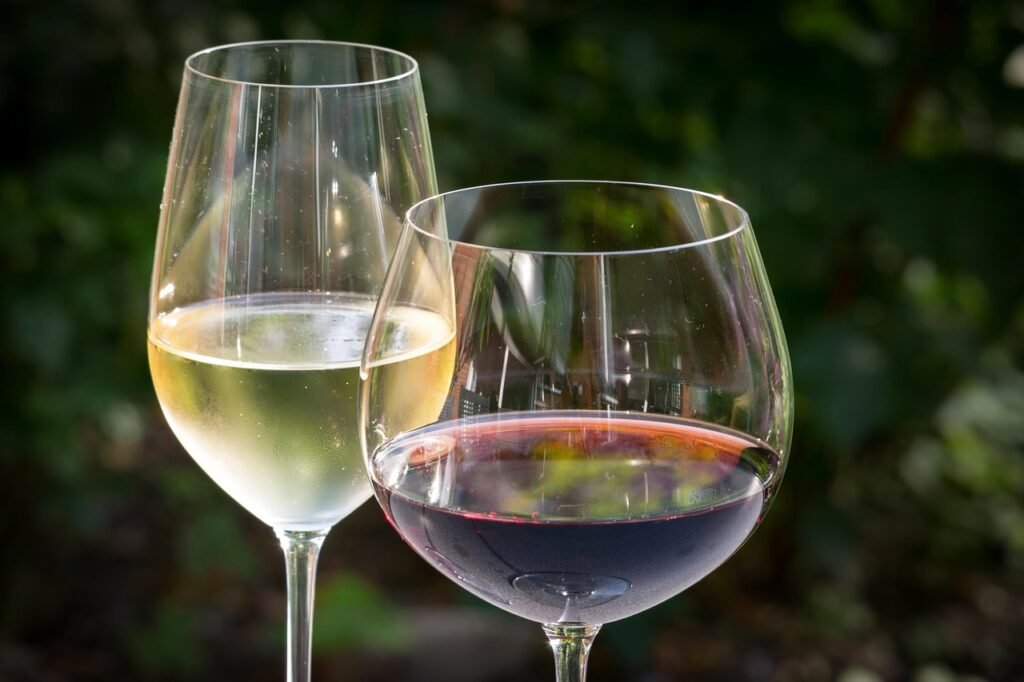
What is wine?
Welcome to the first post in the Complete beginners series! It seems appropriate that we should start with working out exactly what wine is. If you do a quick search of google you will quickly find out that wine is the product which occurs after the partial or full fermentation of grape juice. But what does that mean?
Let’s take each part separately. Firstly, wine involves utilising grape juice. Hopefully you know that grapes are fruits which grow on vines, but did you know that there are actually well over 10,000 varieties of vine? The majority of wine is made from a species of wine known as Vitis Vinifera which accounts for about two thirds of the known varieties. Different parts of the world have different varieties.
Secondly, wine is made using a process of fermentation. Fermentation is where yeast (a fungus) convert starch or sugar to alcohol. Depending on whether the wine is partially or fully fermented, fermentation will reduce the sugar content and raise the alcohol content. According to the EU, to be classified as a wine the finished product must contain at least 8.5% Alcohol by Volume (ABV), although there are wines with as little as 5.5% ABV. Most wines are no more than 16% ABV and are typically in the range of 11 – 15%.
Fermentation also adds flavours to the wine. In a similar way to their being many varieties of grape, there are also thousands of strains of yeast. When most people think about yeast, they think about bread. While not all strains of yeast will add bread flavours, certain strains and wine making processes will add bready flavours to a wine.
An ingredients list…
So if we were to look at the ingredients list in a wine what would we see?
Well, typically 80-85% of wine is water! We have already discovered that around 11-15% of it is going to be alcohol in the form of mostly ethanol and small amounts of other alcohols. However, the other 3-5% is where the magic happens. In this we find:
Various naturally occurring acids – such as tartaric acid, malic acid and citric acid – these give the wine its sharpness and typically mean a wine will have a pH level of between 3 and 4.
Glycerol – a colourless, odourless, liquid – this determines the viscosity or feeling of thickness of the wine in the mouth.
Phenols – such as tannins which give red wines their astringent drying sensation on the gums, and anthocyanins / flavonol which are responsible for the colour of the wine.
Residual sugar – depending on whether the wine is partially or fully fermented it will have different levels of sugar – this will determine the sweetness of the wine.
Different minerals – such as potassium, magnesium, copper, calcium and iron – which add flavour and texture.
Amino acids – such as L-proline – which influence the sensory sensations, sweetness and viscosity of a wine.
And in most wines, a preservative such as sulphur dioxide to keep the wine fresh.
Of course, depending on how the wine is made, there may be other things ingredients. For example, aging the wine in oak barrels will add additional tannins and flavour compounds such as Lignin, Vanillin and Lactones; additional sugar (usually in the form of Rectified Concentrated Grape Must – a grape juice with the non-sugar components removed) to add sweetness; additional acid to add sharpness; or carbon dioxide to add bubbles to sparkling wines.
So, wine is actually quite complex! Hopefully next time you open a bottle you will be able to identify some of the characteristics listed above in it, and you’ll know where they came from! In the meantime, keep exploring this beautiful planet we live on, one glass at a time!